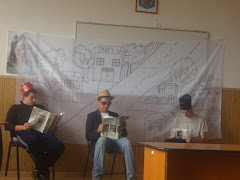Geography of Suceava

Due to its ferrous carbohydrate mineral waters, Vatra Dornei area became a traditional health resort in the Eastern Carpathians. The hydrographical network is rich. The main rivers are: Moldova, Bistrita, Siret, Suceava. There are also small lakes, ponds and a lot of springs.
Under the rule of Petru Musat (1375-1391), the Moldavian Feudal State gets stronger. Fortresses such as: Siret, Scheia, and the Great Fortress of Suceava have been built. In the same period, the capital town moves to Suceava, which became the political, economical and military centre of the country. The Fortress of Suceava became the main fortified citadel of Moldavia.
The rule of Alexander the Kind favoured the consolidation and the development of Moldavia.
Under the Moldavian king Steven the Great (1457-1504) new establishments of great art importance and originality were built, some of them being located on the nowadays Suceava County (Baia, Voronet, Putna).
In the next period, the domestic and the external policy oriented to defend the independence and sovereignty was continued in the spirit of the great king. In 1775, after the Russian-Turkish War - lost by the Ottoman Empire - Bucovina has became a part of the Austrian Empire. This situation lasted one century and a half, until 1918, when Bucovina re-gained the independence, and joined willingly the Romania.
After the Ribbentrop-Molotov Pact, from 1940, the northern part of Bucovina became part of the former Soviet Union. That part is included now in Ukraine.

Suceava County has important resources, such as: forests, mixed minerals, manganese minerals, sulphide minerals, barytine, mineral water springs. All these resources had a direct impact to the economic development of the area.
Main industries of the county:
-Food industry
-Forestry and wood processing
-Pulp and paper industry
-Machinery
-Textiles and footwear
-Mining and non-metalliferous ore processing
-Chemical industry
In December 1998 there were in the county, 19.800 companies, out of which 11.350 Ltd companies, 3 state companies, 8000 familial associations, 180 co-operative type organisations and 447 branches of the companies located in other counties.
The arable land spans over 42% from the county area. The main crops are: cereals, potatoes, sugar beet, sun flower, vegetables and fodder. The soil and climate conditions favoured the development of orchards. This activity is concentrated especially in Falticeni area. The villages from the mountain area are specialised in animal breeding, mainly milking cows and sheep.
The greatest part of the inhabitants is working in forestry and mining. In some localities, the percentage of the active population involved in the industry is greater than the population involved in other branches
Tourism in Suceava
The Suceava county is a very important Romanian tourism destination. Beside the beautiful mountain landscapes, the tourism potential is enriched by the density and the value of the architectural and religious monuments, the natural reservations and ethnographic areas, some of them being unique in the world.
We must highlight Voronet, Sucevita, Vatra Moldovitei, Putna, Dragomirna monasteries, Rachitisu Mare, Lucina, Ponoarele flora reservations, Valea Putnei Forest, Slatioara Century Forest, Frumoasa Natural Pastures, and so on.
Here, the first three Capital Cities Moldavia functioned: Baia, Siret, Suceava. One can find Scheia and Suceava fortresses, a wide chain of monasteries and necropolis such as: Putna, Voronet, Moldovita, Sucevita, Humor, Dragomirna. One can find also popular art centres, hosting invaluable assets of national and world patrimony, comparable with those from the Italian Renaissance.
Here are living together in full harmony, the Romanian population (majority) with another nationalities as: Ukrainians, Germans, Polish, Russians, Old Believers, Jewish, and another nationalities, gathering 3,4%. The educational network counts 1,000 units for primary, gymnasium, and high-school education. In Suceava town there is a University, made of 4 faculties and one college.
The educational assets count 2400 classrooms, 1897 specialised classrooms, 427 labs, 359 workshops, and 162 gyms. In the health care sector Suceava County has broad range units, that can provide the appropriate medical assistance. There are 9 hospitals containing 4267 beds, 120 village surgeries, 60 medical consulting rooms, 62 dental surgeries, 18 dental labs, 94 pharmacies and 9 pharmacy storage.. The Suceava County brings its own contribution to the Romanian art and culture. We have here a rich cultural life, sustained by 10 Culture Houses, 597 libraries, 22 museums and an art school. There are located more than 585.047 archaeological, ethnographical, art and natural science exhibits out of which 100.000 are of international value.

Saturday - we spend your free time to Disco Arena which is located in the center Suceva
Sunday - go to church and then in new construction Iulius Mall. Here in Iulius Mall walk, listen to music and have fun.


























